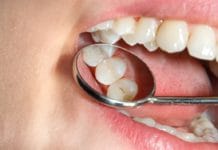Personally, growing up bilingual and attending school in educational spaces that emphasized English-only curriculum was challenging. Language is more than just a group of words necessary to express one’s thoughts and feelings. Language is the essence of one’s personal identity, the very fabric that makes each of us who we are. I have spent many years researching language and identity specifically emphasizing English-only language policies in classrooms and how those policies can negatively impact bilingual student’s educational experiences. This particular article is very general and brief; not reaching into the depth of English-only policies and culture. However, it’s purpose is to offer some basic guidelines on implementing some simple methods in dental and healthcare settings to improve effective and caring communication with bilingual patients.
Language is the essence of one’s identity in terms of culture, gender, ethnicity, and so on. Language through discourse identifies one as a member of a group; language is not neutral, and language is the very fabric of one’s personal and social identity.3- 7 Therefore, effective communication with bilingual patients in dental and healthcare is critically important.
Bilingual patients must feel a sense of trust and acceptance when communicating with dental and healthcare professionals. Taking the time to understand bilingual patients and establishing cultural acceptance by embracing bilingualism is essential. Bilingual patients can potentially feel more comfortable and be more compliant with dental/health recommendations and treatment if they feel as though they are genuinely cared for. Demonstrating caring is described as a critically important component of embracing bilingualism within society in general.1-3, 8, 9
The number of bilingual people has, and will, continue to increase in the United States; it is important that dental and healthcare professionals are prepared and educated to provide optimal and effective care to all patients.
General Guidelines to Improve Communication with Bilingual Patients
- Some bilingual patients may ask a family member or friend to accompany them to their dental/healthcare appointment. If this is the case, be sure to speak directly to the patient and not the friend or family member serving as their interpreter. Eye contact is a very important non-verbal cue that lets the patient know they have your full attention and you want to understand their needs and concerns.
- Ask the patient about their past dental and healthcare experiences; this is essential to understanding patients. For example, ask them if there is anything they would like to tell you about their experiences and if they have any questions or concerns regarding procedures for the appointment.
- Be sure the office or clinic has educational materials, medical history forms, and any other information readily available in different languages.
- Some bilingual patients may not have the opportunity to be accompanied by a friend or relative to serve as their interpreter. Dental and healthcare offices should employ bilingual staff to serve patients that speak minimal English or do not speak English.
- When calling to confirm appointments, confirm the appointment in the patient’s native language; bilingual staff members can confirm these appointments to be sure the patients receive the message.
- Some dental and health science programs require students to enroll and complete a medical terminology course in Spanish or another language besides English. Taking a language course in Spanish, Portuguese, or another language is an important part of lifetime learning. Learning another language is beneficial for effective communication with bilingual patients and personally rewarding. If you are learning a second language, such as Spanish or Portuguese, do not worry about making mistakes when communicating with patients in those languages. Bilingual patients will generally appreciate that you are embracing their language and making efforts to improve communication. In some instances, the patient may actually speak English using the words that they know to assist with communication.
Following these general guidelines can improve bilingual patients experiences by making them feel cared for and understood. Considering the increase in the number of bilingual people immigrating to the United States, it is important to be prepared to effectively care for bilingual dental and healthcare patients by embracing language and culture.
Next: How to Make a Difference with Refugee Dental Care
Need CE? Click Here to Check Out the Self-Study CE Courses from Today’s RDH!
Listen to the Today’s RDH Dental Hygiene Podcast Below:
References
- Bartolome, L. (2006). The Struggle for Language Rights: Naming and Interrogating the Colonial Legacy of “English Only” Human Architecture: Journal of the Sociology of the Self-Knowledge, 4(3), Article 5, 25-32, pp. 28, 31.
- Bartolome, L. (2008). Authentic Carino and Respect in Minority Education: The Political Ideological Dimensions of Love. International Journal of Critical Pedagogy, Volume 1(1), pp. 1-17.
- Darder, A. (1995). Culture and Difference. Bergin and Garvey: Westport, Connecticut.
- Fairclough, N. (2013). Critical Discourse Analysis: The Critical Study of Language. Routledge: New York, New York.
- Freire, P. (2011). Pedagogy of the Oppressed. Continuum Publications: New York, New York.
- Gee, J. P. (1989). Literacy, Discourse, and Linguistics: Introduction. Journal of Education, 171(1), pp. 5-17.
- Gee, J. P. (1996). Social Linguistics and Literacies: Ideology in Discourses. Taylor and Francis: Bristol, Pennsylvania.
- Macedo, D. (2003). The Hegemony of English. Paradigm Publishers: Boulder, Colorado.
- Valenzuela, A. (1999). Subtractive Schooling: U.S. Mexican Youth and the Politics of Caring. State University of New York Press: New York, New York.












